Homelessness crisis under the microscope
Unofficial estimates put the total number of homeless in the Bundaberg region at between 1800 and 2000 and growing, but far from being numbers, they are people. We look at the services carrying the weight of our most pressing crisis while politicians remain unsure of what to do.
Bundaberg
Don't miss out on the headlines from Bundaberg. Followed categories will be added to My News.
Many older Bundaberg residents living on the street believe they will die homeless.
With interstate investors acquiring 70 per cent of investment properties in some parts of Queensland, rents are soaring past affordability, adding to the already heartbreaking fact the rental vacancy rate in Bundaberg has plummeted from 3.70 per cent in 2011 to just to 0.40 per cent.
News Corp’s Bundaberg NewsMail has been campaigning in 2022 to highlight the plight of our homeless, to stop the issue from being swept under the carpet and for our elected governments at all levels to stop passing the buck, and work together to resolve or at least ease this crisis.
As people ranging from young families to unwell elderly couples sleep rough, we take a look at the support services shouldering the bulk of a problem the government just doesn’t seem to know how to fix.
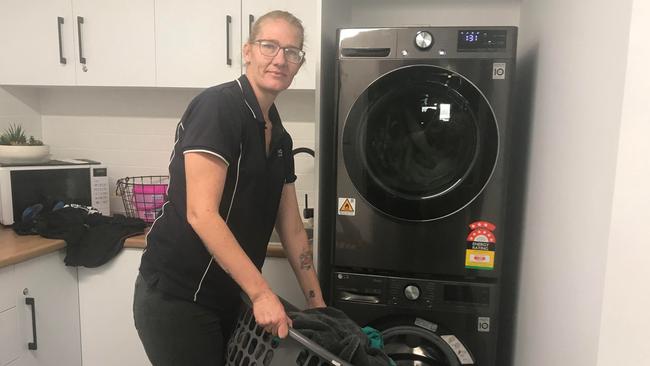
Angels in a time of need
When the death of a loved one and the loss of a job after 20 years prompted Sue Tasker to make a difference in the world in 2015, she could never have imagined just how big an impact she would have on the Bundaberg community.
The Angels community group started as a mini-mart offering cheap groceries, as well as offering support to those who were doing it tough.
In 2022, the organisation provides one of the few places where locals can turn for a hot meal and warm shower when they’re doing it tough.
Ms Tasker speaks between bites of lunch. It’s the only time she has free.
The homeless situation, she says, is a crisis.
“Even if they've got the money, they can’t get a house,” she said.

“And many people now are priced out of the market so they‘re overcommitting to get into a house and we see the tail end of that where they don’t have food because they’ve committed what they can to get into a house that is a lot more than they would have paid 12 months ago.
“You've just got to get on Facebook and you see so many people being told they’ve got to get out, so it’s a huge problem.”
While there are unofficial estimates of between 1800-2000 people in Bundaberg being on the street, Ms Tasker says an exact figure is too difficult to calculate because many people are couch surfing or staying with friends in temporary set-ups.
One of Angels’ own staff members is in this very situation.

The service opened a support centre in Bundaberg’s CBD a year ago, offering comfortable lounges, free clothing, hot showers, food and visits from a hairdresser to help them maintain their confidence.
Ms Tasker says the team puts together about 120 hampers a week, but they cope.
“The shower and laundry facilities are getting well used which is great,” she said.
Up to 22 showers can be taken on any given day.
When staff aren’t packing hampers, they’re assisting people with making doctors’ appointments and other tasks.
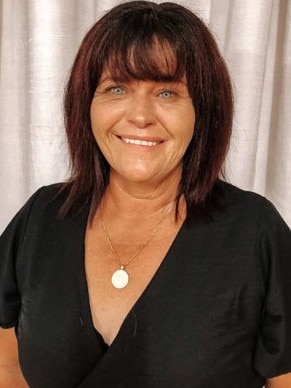
Ms Tasker echoes a question many in the community are asking, which is why more of Bundaberg’s empty spaces or land is not being used to provide temporary camps.
Like many others, she accepts that houses cannot be produced out of nowhere.
“The answer‘s a lot bigger than we can even think of,” she said.
She acknowledges Labor’s commitment to build 1200 new social dwellings, but said it was years down the track and failed to address the issue right now of people having nowhere safe to sleep at night.
“We do have to find a way to get these people off the streets and sleeping in a safe area,” she said.
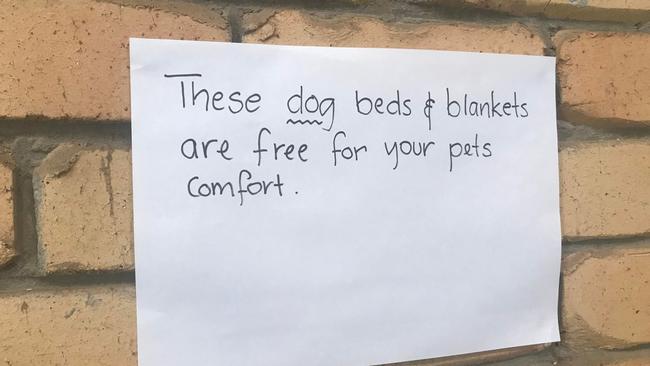
Women over 50 are one of the biggest demographics facing homelessness, and one of the most at-risk from sleeping rough, Ms Tasker said.
“It's sad, we see them go off with their trolley of a night and they just find a place that they can stay.”
Needless to say, Ms Tasker is at the forefront of homelessness in the region. She is not a career politician, nor does she have any vested interest. She simply knows what is happening, first-hand.
“I don't know what the answer is; they say it’s not a crisis,” she said.
“It's a crisis when we have so many Australians homeless, that’s a crisis, to me anyway.
“If there‘s children living in tents or cars, that’s a crisis.”

Ms Tasker said there seemed to be a lot of talk, but not a lot of action.
“Let’s just do something. I understand red tape. I hate red tape, but let’s just do something,” she said.
Even freeing up land so people could sleep without fear of being told to move on in the morning would go a long way to helping.
Insurance is often listed as a concern, but Ms Tasker wonders if it really is, or if people just aren’t looking into things deeply enough to effect change.
“There‘s obstacles but there’s got to be ways to overcome them,” she said.
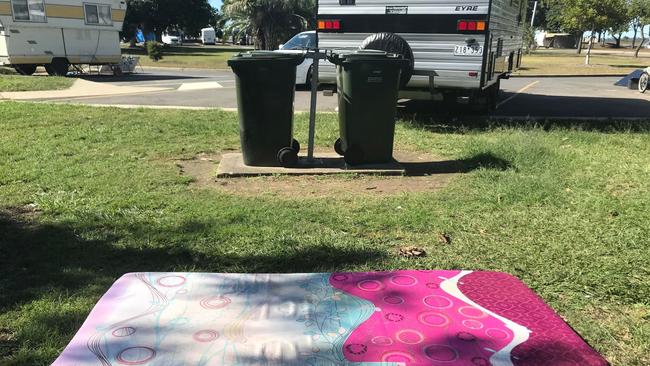
Ms Tasker said Angels was quietly working away on whatever solutions it could find.
Like most community groups, they wear the weight of the government’s indecision on how to deal with a crisis.
And of course, when you’re homeless, everyone assumes the worst, which is why Ms Tasker says many are reluctant to open up buildings or shelters.
“People are acting like because they're homeless they’re going to destroy buildings,” she said.
Most of them are just homeless because they've found themselves in that situation.”
The NewsMail has covered myriad cases of homelessness in Bundaberg, including the story of a mother and son who faced homelessness in February after years in their rental.
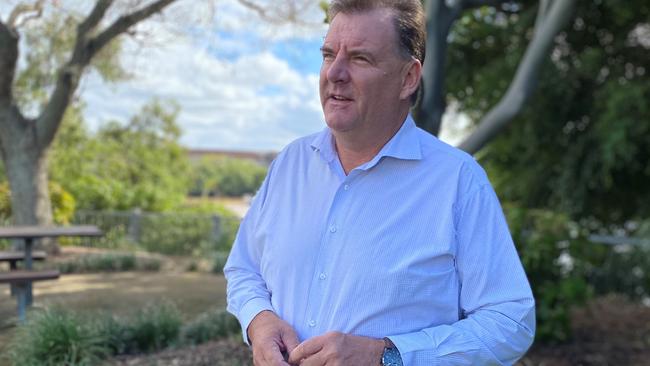
A crisis no one can seem to fix
But what does anyone do when even politicians all but admit they're stumped?
Hinkler MP Keith Pitt has previously said the responsibility for housing rests with the state, with the Federal government able to offer support by way of rent assistance and other federal schemes.
When asked what the state could do to alleviate the issue of homelessness immediately, MP Tom Smith‘s office provided some background information and the NewsMail understands Mr Smith has committed to helping get anyone with children into some form of accommodation.

When the NewsMail approached Bundaberg Regional Council - which announced it was taking out a $30 million loan in this year's budget to help fund a new aquatic centre - if homeless people were being moved on from public land and if it was possible to open up an area such as the recreational precinct as a makeshift camp, CEO Steve Johnston said the council supported the need for a housing summit and would take an active role, but needed other levels of government at the table first.
Burnett MP Stephen Bennett, a former builder, said the numbers just didn’t add up for the greater area.
Mr Bennett said the wait list for social housing in the region had blown out by 80 per cent in the last four years.

“In June 2021, there were almost 600 people in the Bundaberg and Burnett electorates on the very high need waitlist for housing according to the latest public data,” Mr Bennett said.
“This list has an average wait time of almost two years in our region.
“That was 12 months ago, today, the situation is so much worse.”
Mr Bennett echoed a call from LNP deputy leader Tim Mander for the state to consider the findings of a recent auditor-general‘s report and to release more land for freehold, affordable and social housing.
“At a time when families on dual incomes are forced to live in cars or tents, every suggestion to improve the situation must be taken on board,” he said.
“We haven’t built enough homes in Queensland to keep pace with our surging population and the recent budget doesn’t even start to address the issue.
“$42 million dollars has been allocated for social housing in the Wide Bay, that’s an area that spans from Winfield, out to Eidsvold, down to Kingaroy and back up to Gympie and Rainbow Beach.
“Of that $42 million, there’s only $13 million for construction costs.
“With the average cost of building a home around $500,000, $13 million would only build 26 homes.
“How will 26 homes even begin to meet demand, remembering there were 600 applications on the very high waitlist 12 months ago in just the Bundaberg area?”
Last year, we asked all our local politicians to address the region‘s lack of vacancies.
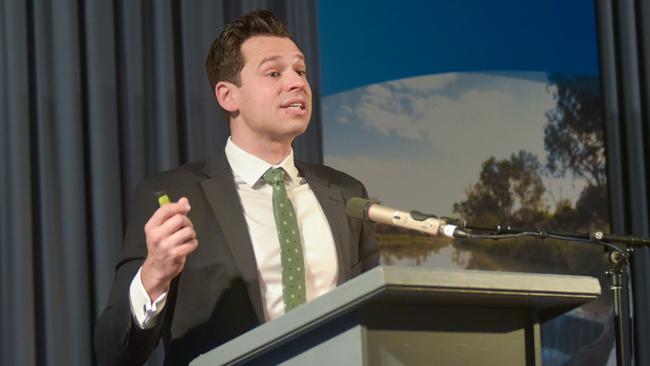
Freeing up land, taxing investments could be key
Demographer Simon Kuestenmacher recently deemed housing affordability the biggest issue facing Australia today.
Mr Kuestenmacher, co-founder and director of The Demographics Group, said the “bunching up” of the Australian workforce and the disappearance of the middle class was part of the social changes that were contributing to the crisis of homelessness and affordable housing in the regions.
A “polarised” workforce meant there was more demand for housing at the very high end of the market, and more demand at the very low end.
“Housing affordability remains the biggest social issue in Australia,” Mr Kuestenmacher said.
It was a problem that was only going to get worse, he said.
The only way out of it, as Mr Kuestenmacher saw it, would be state-owned developers building housing on state-owned land.
He said he believed other ways to tackle the crisis could include rezoning more land to allow housing, and heavily taxing empty shops and second homes to free up space in the rental market.




